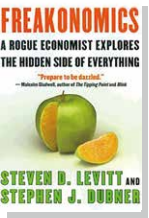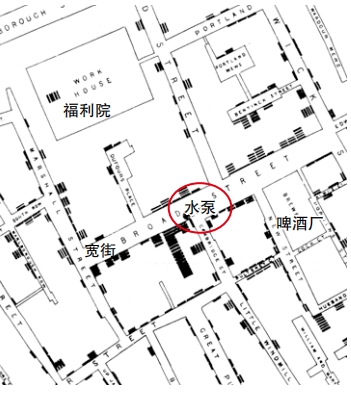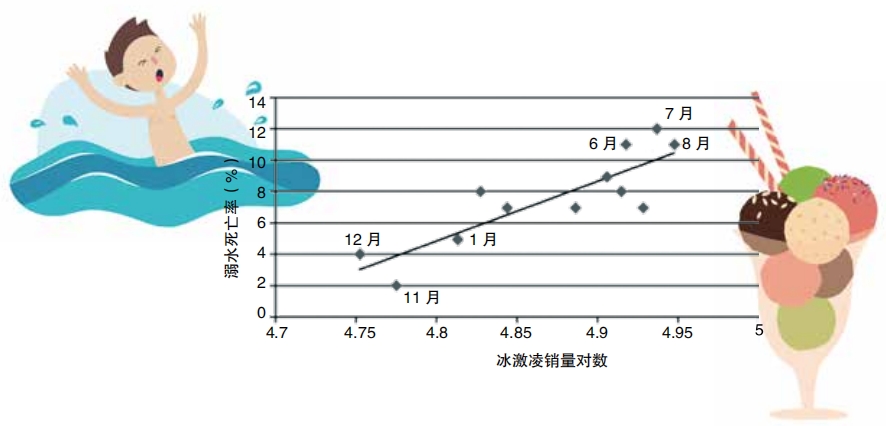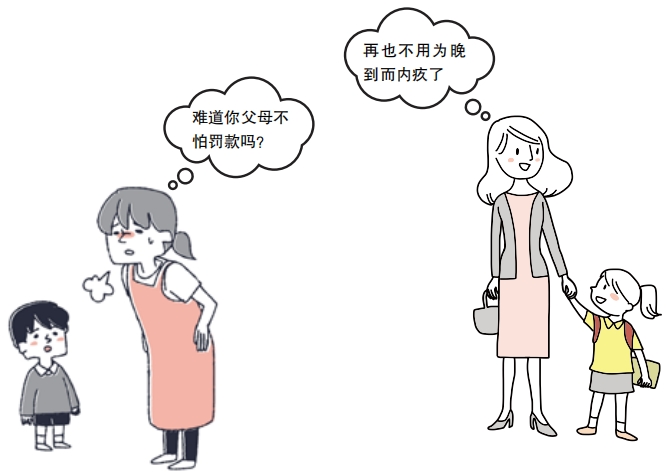
Amanda was three years old and had no interest in learning to use the bathroom. Her father, Steven Levitt, decided to try something new. He told his daughter, “Amanda, every time you go pee pee in the potty, I’m going to give you M&Ms. Okay?” Amanda loved M&Ms. At first, the plan seemed to be working perfectly. Amanda started going to the bathroom to pee. Levitt was very pleased with himself. But just a few days later, things changed. A few minutes after Amanda went to the bathroom, she said she had to go again! Every few minutes, she wanted to try to pee – just so she could get her candy reward. This wasn’t what Levitt had in mind at all.

If you have a younger sister or brother, this sort of story probably sounds familiar. But this story is not meant as a lesson on potty-training. It’s actually a lesson about economics.
What is Economics Really About?
The economy is a system that gets goods and services from producers to consumers. It’s about money and business. What could kids and candy possibly have to do with that? Quite a lot, actually. People who study economics try to understand how people and society as a whole manage resources and make decisions.
Steven Levitt is a professor of Economics at the University of Chicago and co- author of the best-selling book, Freakonomics. He told this story about his daughter on his popular show, Freakonomics Radio. The story was a lesson about incentives. “An incentive is simply a means of urging people to do more of a good thing and less of a bad thing,” wrote Levitt and his co-author Stephen Dubner in Freakonomics.
The M&M candy gave Amanda an incentive to use the bathroom instead of her diaper. But the incentive was too strong. She started going to the bathroom far more than her parents intended. The lesson Levitt drew from this story was that economists must be careful. Predicting or changing people’s behavior isn’t easy at all.

The study of economics can lead to important insights about ourselves and our society. In Levitt and Dubner’s book, they make the point that things many people believe to be true are often wrong. When you look at economic data correctly, you can learn important facts about the world. For example, a child that earns hightest scores in school is more likely to have highly educated parents and lots of books at home. Children whose parents stay married or whose parents read them lots of books are not more likely to earn higher test scores. That may seem very surprising. The conclusion Levitt and Dubner draw is that who parents are (their social class) matters more to a child’s education than anything the parents do to try to give the child a better chance at success. This type of information can help society better support parents and kids who are struggling.
How do Economists Study the Economy
Economists study how people make decisions, how people interact with each other, and how entire economic systems work. They try to find patterns and seek to understand cause and effect. They mainly use math and statistics to do their research.
Statistics can reveal if one thing has actually influenced another. For example, in 1854, an outbreak of the deadly disease cholera spread through London. Doctor John Snow mapped cases and saw that they centered on a certain water pump. He also tracked down people who did not get sick and asked whether they had drunk this water. Almost all the people who got sick had drunk the same water and those who didn’t get sick hadn’t. Since the chance of this happening randomly was very low, Snow knew that bad water had spread the disease.
In other cases, what seems like a cause-and-effect relationship is just a coincidence. For example, it’s a fact that deaths from drowning and ice cream sales increase and decrease together. On days with more ice cream sales, there are also more drowning deaths. Yet one thing does not cause the other—ice cream certainly doesn’t turn you into a risky swimmer! The real underlying cause is hot weather. On hot days, more people swim or spend time on the water (which increases the risk of drowning) and more people eat ice cream.

Statistics can sometimes be directly measured. If ice cream shops track their sales, then that’s a good measurement of how much ice cream people are buying. Statistics can also be gathered from surveys and polls in which people self-report their behavior. They may report how often they go swimming or rank their favorite ice cream flavors.
How Economics can Improve Society
Once economists have come up with a theory to explain a certain pattern or trend, they or others may apply that theory to the real world. Governments or other leaders can use economists’ ideas to try to influence people to behave in better ways.

Taxes or tax credits are commonly used to either reduce or increase people’s incentive to take a certain action. For example, many countries have placed a high tax on cigarettes. This has reduced people’s incentive to smoke, which has reduced deaths from smoking-related cancer. Some countries have recently started to tax sugary drinks for a similar reason. Consuming sugary drinks is linked to obesity. Reducing the incentive to buy these drinks can lower obesity rates. Meanwhile, many areas offer tax credits to people who add solar panels to their homes or make other upgrades that will save energy. In this case, a person’s incentive to improve their home has increased, and more improved homes will put less of a strain on the environment and climate.
Some economists work directly with government leaders to help manage their entire economy. They try to keep the economy healthy. For example, governments can set interest rates, or the amount it costs to borrow money. Low interest rates tend to encourage spending which leads to new businesses and growth. Higher interest rates tend to encourage saving which may lead to less growth.
In recent years, economists have recognized that endless growth is not ideal. Kate Raworth, a British economist, points out that economic growth isn’t always good because earth does not have an endless supply of resources and can’t endlessly absorb human waste. She came up with the idea of using a doughnut as a model for finding balance. The idea is that economists should try to keep the economy balanced in a state where everyone has enough but no one is getting too wealthy. The hole of the doughnut represents people who don’t have enough access to healthcare, income, or work. And the space beyond the doughnut represents industries that grow out of control, putting more pressure on the planet than it can support. The goal is for everyone to stay balanced on the doughnut. “I am advocating a global economy that is regenerative by design, works within the cycles of the living world, and that is distributive by design, shares value far more equitably with everyone who’s co-creating it,” she told Stephen Dubner on Freakonomics Radio.

Economics in Your Life
The economy is avast and complex, interconnected system. But all of the moving parts in this system are people making daily decisions. Because of that, any study of economics requires a good understanding of human psychology and human behavior. Many key ideas in economics describe the factors that influence people’s daily decisions. Understanding these factors can help you make better, more informed decisions.
Imagine that you’re walking across a park on a summer day and you’re hot and very thirsty. A nearby cart sells cold drinks. You can have one, but only if you give up some of your money. That means you can’t spend that money on anything else. Across the park, there’s a water fountain. You could get a drink there for free. But you’d have to spend ten extra minutes walking there and back, so it’s not really free. To drink from the fountain, you’d have to give up your time. You’d also have to go through the discomfort of walking farther in the heat. What decision would you make?
To get something you want or need, you usually must give up some other thing that you want or need. Economists call this a tradeoff. In this situation, you can trade either money or time and effort for a cold drink. The choice you make reveals whether time or money is more valuable to you right now.

People don’t always consider all the costs involved in a choice. Some costs are quite hidden.
To understand these hidden costs, here’s another example. Imagine you’re deciding whether or not togo to a certain university. You look at the tradeoffs. It will cost you a lot of money. You have to pay for tuition and textbooks. You also have to pay for housing and food. These are important costs to consider when it comes to budgeting your money. But an economist would also look at opportunity costs. That’s what you have to give up in order to have your education. The money you pay for a room and food aren’t part of this. “Even if you quit school, you would need a place to sleep and food to eat,” writes Gregory Mankiw, author of the book Principles of Economics. Your housing and food may even be cheaper at school than elsewhere.
The main thing you give up when you go to school is time. While you are paying to learn, no one is paying you to work. (Of course many students support themselves with part time jobs or go to school part time while working, but it’s nearly impossible to work full time and goto school full time). That time you could have spent working is called an opportunity cost.
Whenever you make a decision, you should consider not only how much money or time you are spending, but what else you could have been spending that money or time on. Opportunity cost explains why young sports stars often don’t finish college. When basketball star LeBron James was eighteen years old, he signed a $12.96 million contract to play for the Cleveland Cavaliers in the NBA. A few years later, he got a contract extension worth $60 million. If James had gone to college, he wouldn’t have been able to accept these contracts for tens of millions of dollars. That opportunity cost would have been far too high. So he gave up spending time on a college education and became a billionaire playing sports.
Small, Smart Choices
The decision LeBron James faced was highly unusual. He could accept tens of millions of dollars to play basketball, or he could leave all that money on the table and go to a university. Most people will never face a decision that extreme. Most of the choices we make daily are incremental. That means they involve small degrees of changes in costs and benefits.

For example, if you have a big exam coming up, you don’t choose between spending every waking moment studying or not studying at all. Instead, you may choose to spend one or two hours studying instead of going to sleep at your usual time. Economists call this type of decision a marginal change. In general, spending more time studying increases the benefit you’ll get from your education. But you have to balance that with the amount of rest that you’re willing to give up. The marginal benefit is how much of a better grade you’ll get from each additional unit of time spent studying, while the marginal cost is how much you’ll suffer from each additional unit of time spent not sleeping.
Marginal costs and benefits are not constant.As sleep-deprived students know all too well, at some point, as you get increasingly tired, the marginal cost of staying up late becomes much higher than the marginal benefit of extra study time. A reasonable person should only make a decision if the marginal benefit is greater than the marginal cost. That means if you’re too tired to study effectively, you should just go to sleep!
A reasonable person compares costs and benefits before making a decision. If the costs and benefits change, a reasonable person’s decision will also change. As benefits go up or costs go down, the incentive to do something increases. As benefits go down or costs go up, the incentive decreases.
Emotions and Surprises
Even when economists think they understand incentives and can predict people’s actions, they often get things wrong. That’s because people don’t always behave in reasonable or logical ways. Emotions play a huge role in our decision-making.

In Freakonomics, Levitt and Dubner tell a story about day care centers. These centers often had trouble with parents coming late to pick up their children. A group of economists decided to solve the problem with a fine. Parents who came late had to pay an extra fee. To their surprise, after the late fee was announced, the number of late pick-ups increased to more than double the original average! Most parents could easily afford the fee, and now they no longer felt guilty about being late. They could just pay for some extra time. These economists had forgotten to consider the emotional toll of feeling guilty. They also hadn’t accounted for the high benefit for many people of having some extra time at the end of the day.
Safety laws also haven’t always worked out exactly as intended. Requiring people to wear seatbelts in cars reduces the number of deaths from car accidents. However, economist Sam Peltzman found, in 1975, that this requirement also increased the total number of accidents. Why is that? Most people dislike driving slowly and carefully. They want to get where they are going, and they don’t want to have to focus entirely on the road. When people feel safer while in a car, their incentive to drive safely and pay attention drops a little bit. So a rule meant to keep people safe actually increased people’s incentive to drive in a faster, more risky manner! These examples reveal why understanding human psychology is an important part of economics.
Why is It Important to Study Economics
Studying economics can reveal connections and causes that aren’t immediately obvious. In Freakonomics, Levitt and Dubner write that “conventional wisdom is often wrong,” and “dramatic effects often have distant, even subtle, causes.” In other words, your assumptions about the way the world works like the assumption parents wouldn’t want to pay a fine for late pick-ups at day care centers, could be completely wrong. Wrong assumptions lead bad decisions.
To make good decisions, you must pay careful attention to all the dimensions of your choice. Have you considered all the most important costs and benefits? Does your decision have hidden opportunity costs? What incentives are at play? What emotions might be involved? Whether you’re trying to decide whether to splurge on a cold drink, how late to stay up studying the night before an exam, or whether to go to a university or get a job, understanding economics will help you weigh the costs and benefits more thoroughly. You’ll be able to make smarter decisions and lead a better life.


